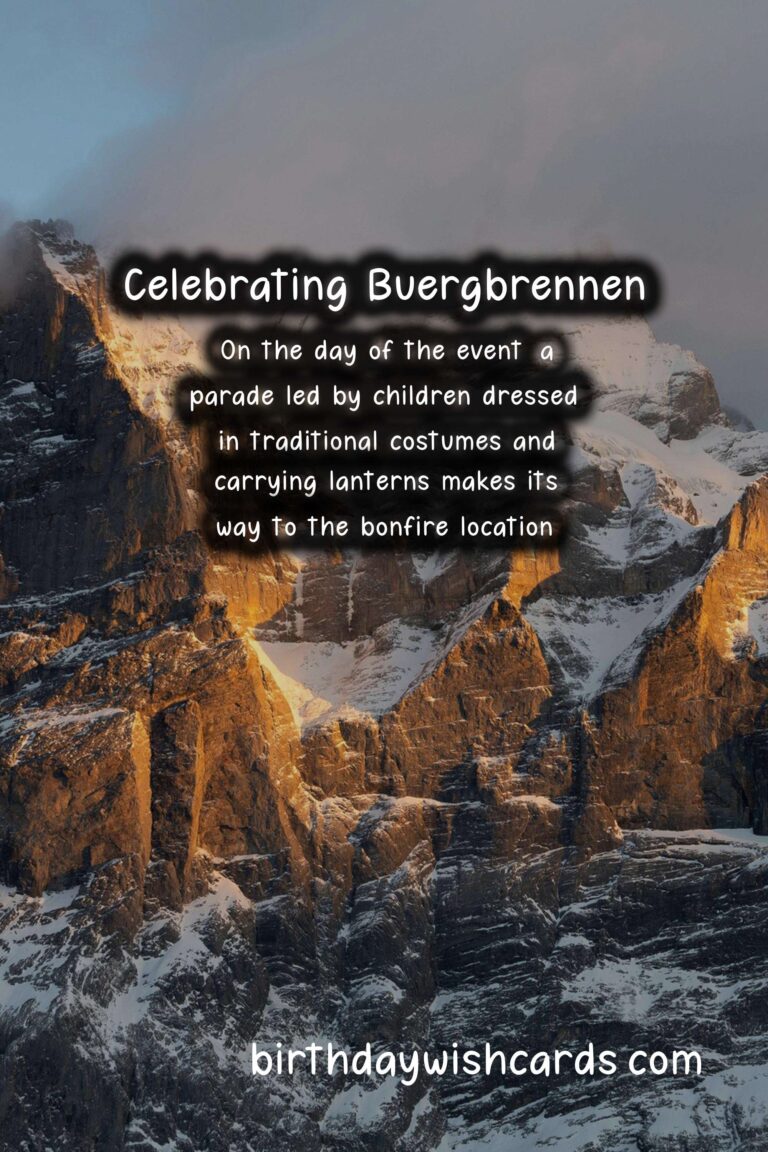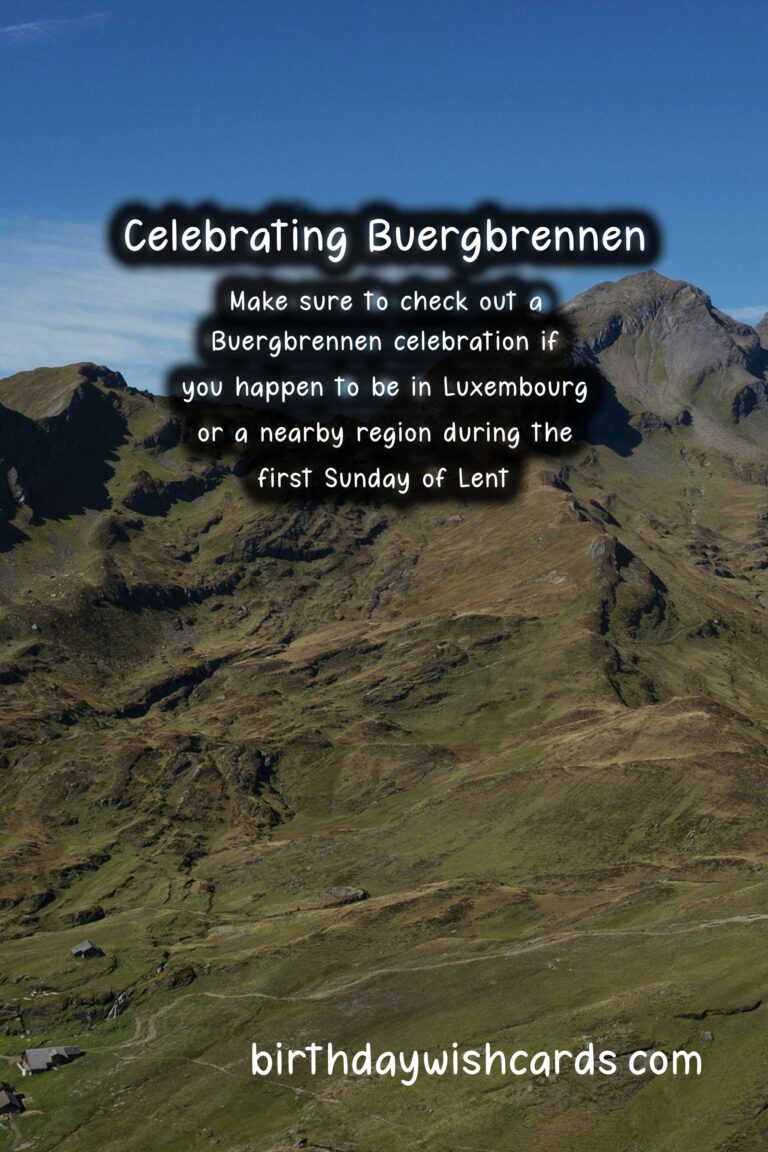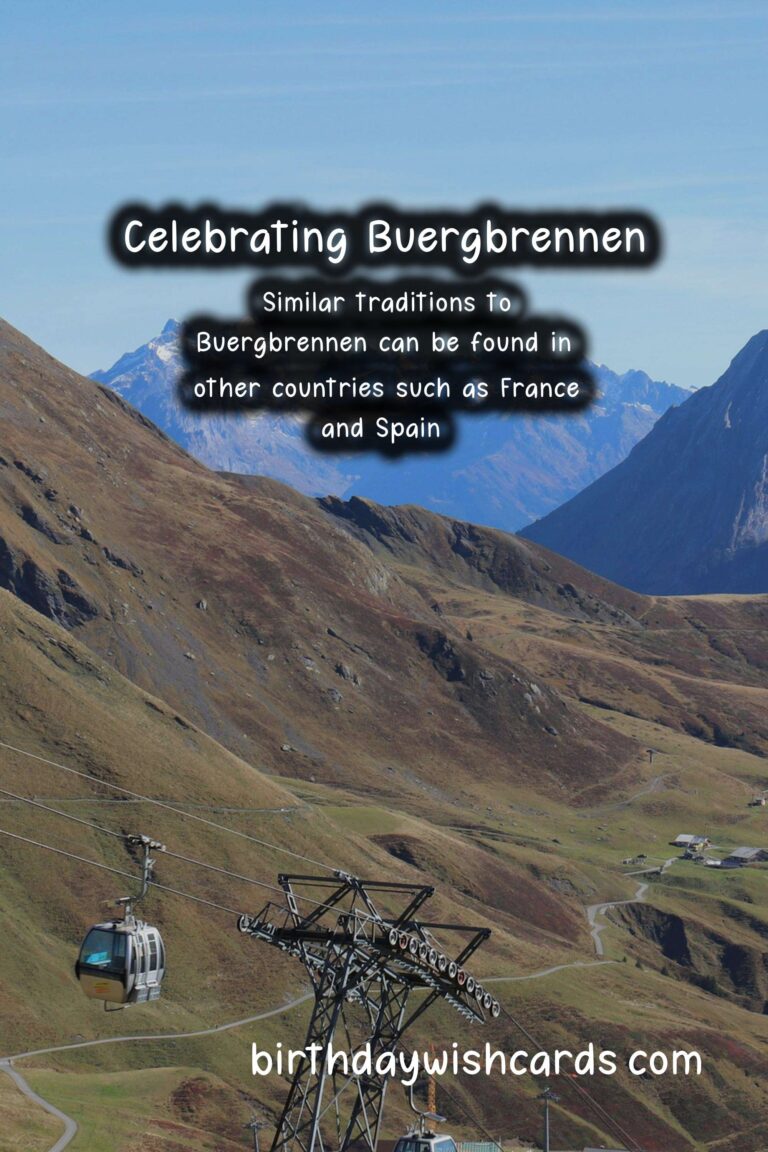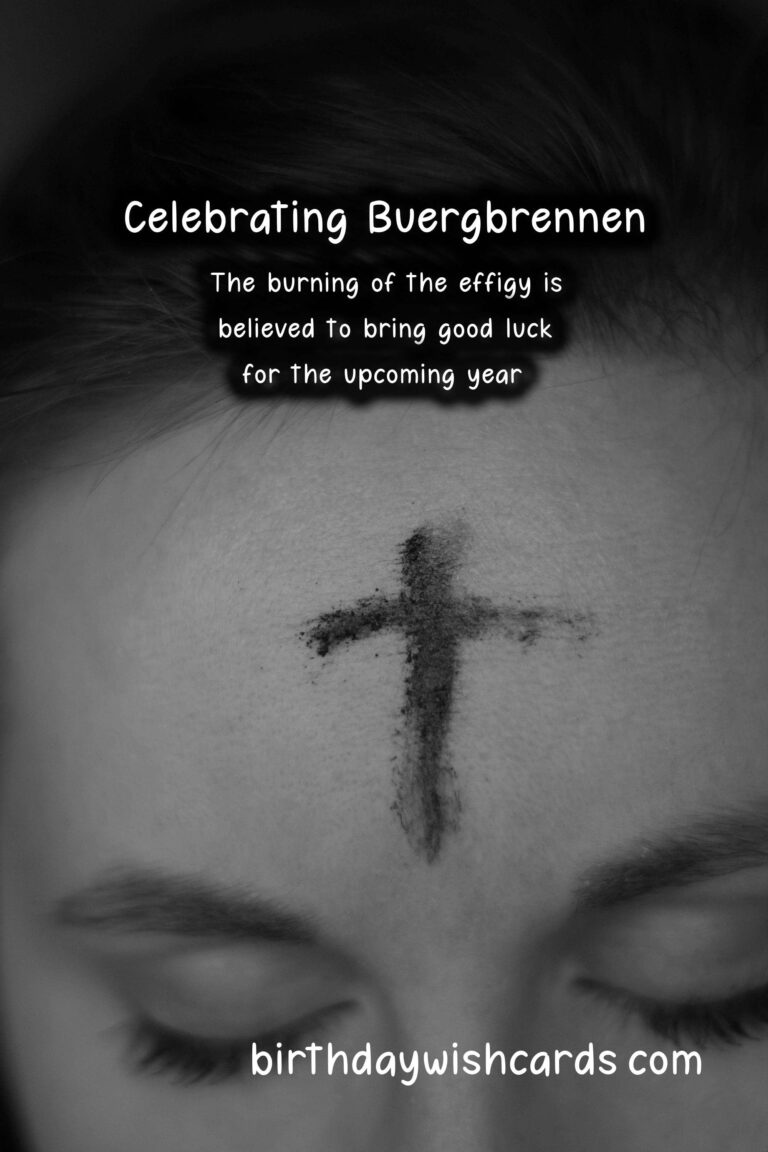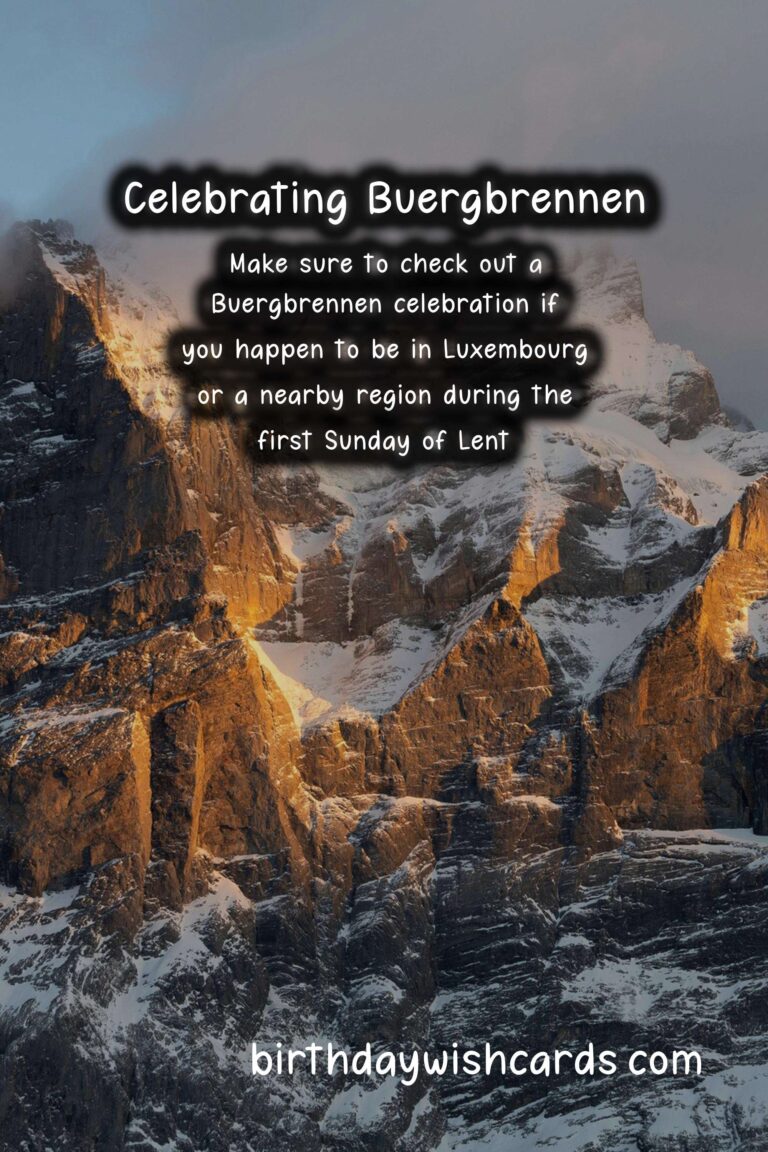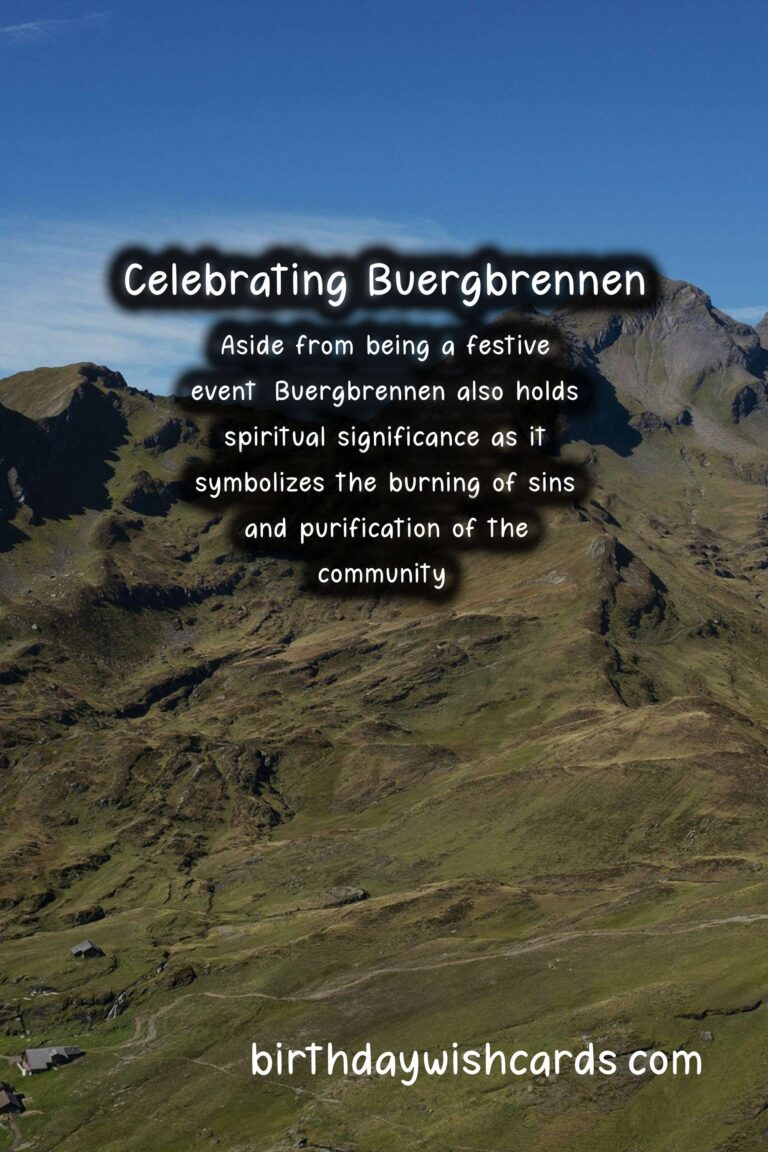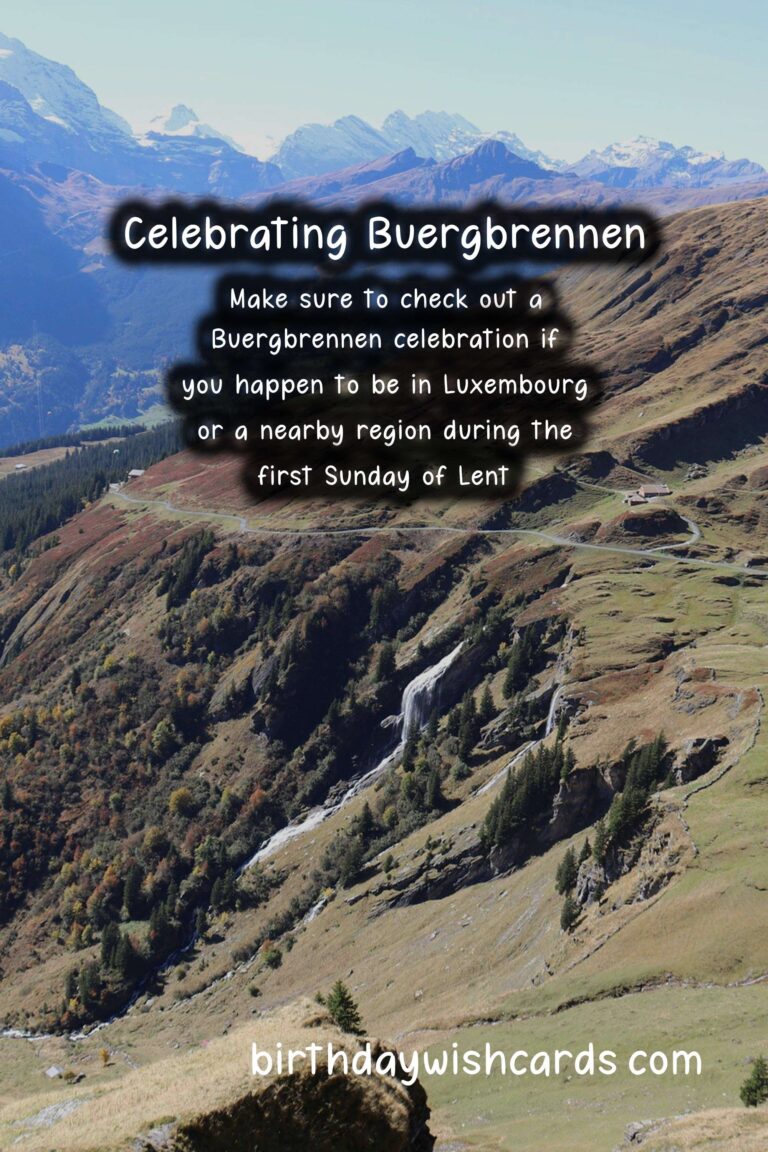 The first Sunday of Lent is a significant day in many Christian traditions, particularly in Luxembourg and parts of Germany. In Luxembourgish, it is called Buergbrennen, which translates to “burning of the castle.” This unique celebration involves lighting a large bonfire on a nearby hill or mountain, symbolizing the burning of winter and the welcoming of spring. The origins of Buergbrennen can be traced back to pagan rituals, but it has evolved into a religious and cultural event that is eagerly anticipated by the local community.
The first Sunday of Lent is a significant day in many Christian traditions, particularly in Luxembourg and parts of Germany. In Luxembourgish, it is called Buergbrennen, which translates to “burning of the castle.” This unique celebration involves lighting a large bonfire on a nearby hill or mountain, symbolizing the burning of winter and the welcoming of spring. The origins of Buergbrennen can be traced back to pagan rituals, but it has evolved into a religious and cultural event that is eagerly anticipated by the local community.
The Celebration of Buergbrennen
The preparations for Buergbrennen start weeks in advance, with community members collecting and piling wood for the fire. On the first Sunday of Lent, the celebration usually begins with a parade, where young children lead the way, dressed in traditional costumes and carrying lanterns. The parade is accompanied by traditional music, and the participants make their way to the chosen location for the bonfire. Once the parade reaches the bonfire, a straw effigy of a castle is set on fire, much to the delight of the onlookers. It is believed that the burning of the effigy brings good luck for the upcoming year. As the bonfire burns, people gather around it, enjoying traditional food and drinks, such as Luxembourgish smoked sausages and warm mulled wine.
The Significance of Buergbrennen
Aside from being a festive and social event, Buergbrennen has profound spiritual significance. The burning of the effigy symbolizes the end of the winter season and the beginning of spring. It is also seen as a representation of the burning of sins and the purification of the community. Many Catholics view it as a time to reflect on their faith and make resolutions for the Lenten season.
Buergbrennen Around the World
While Buergbrennen is primarily celebrated in Luxembourg and parts of Germany, similar traditions can be found in other countries as well. In France, the celebration is known as Fete de Cochon, where a roasted pig is the centerpiece of the festivities. In Spain, Bonfire Night is celebrated on the eve of St. John’s Day and involves lighting bonfires to purify the community.
Join the Festivities
If you happen to be in Luxembourg or any of the surrounding regions during the first Sunday of Lent, make sure to visit a Buergbrennen celebration to experience the rich traditions and warm hospitality of the locals. It is truly a unique and unforgettable experience that will leave you with a deeper understanding of the culture and traditions of this part of the world. Buergbrennen is a celebration of the first Sunday of Lent, primarily observed in Luxembourg and parts of Germany. The tradition involves lighting a large bonfire to symbolize the burning of winter and the welcoming of spring. Buergbrennen originated from pagan rituals but has now become a significant religious and cultural event. Preparations for Buergbrennen start weeks in advance, with community members collecting and piling wood for the bonfire. On the day of the event, a parade led by children dressed in traditional costumes and carrying lanterns makes its way to the bonfire location. The parade is accompanied by traditional music and ends with the lighting of a straw effigy of a castle. The burning of the effigy is believed to bring good luck for the upcoming year. Aside from being a festive event, Buergbrennen also holds spiritual significance as it symbolizes the burning of sins and purification of the community. Similar traditions to Buergbrennen can be found in other countries such as France and Spain. Make sure to check out a Buergbrennen celebration if you happen to be in Luxembourg or a nearby region during the first Sunday of Lent. 
